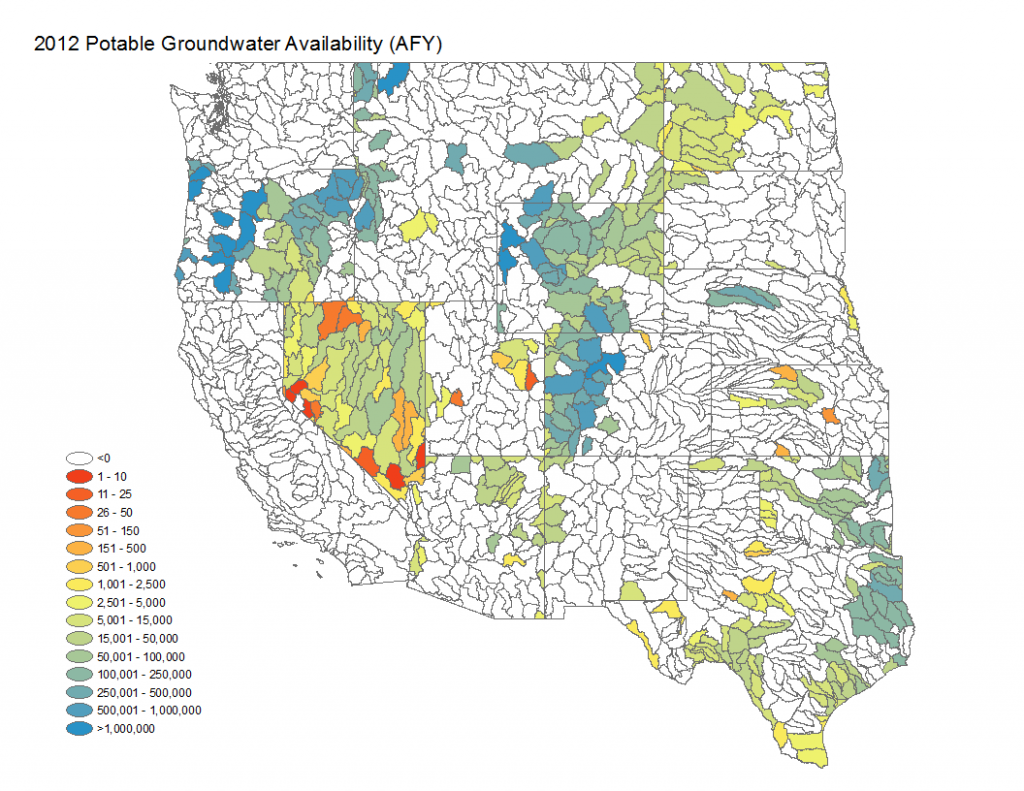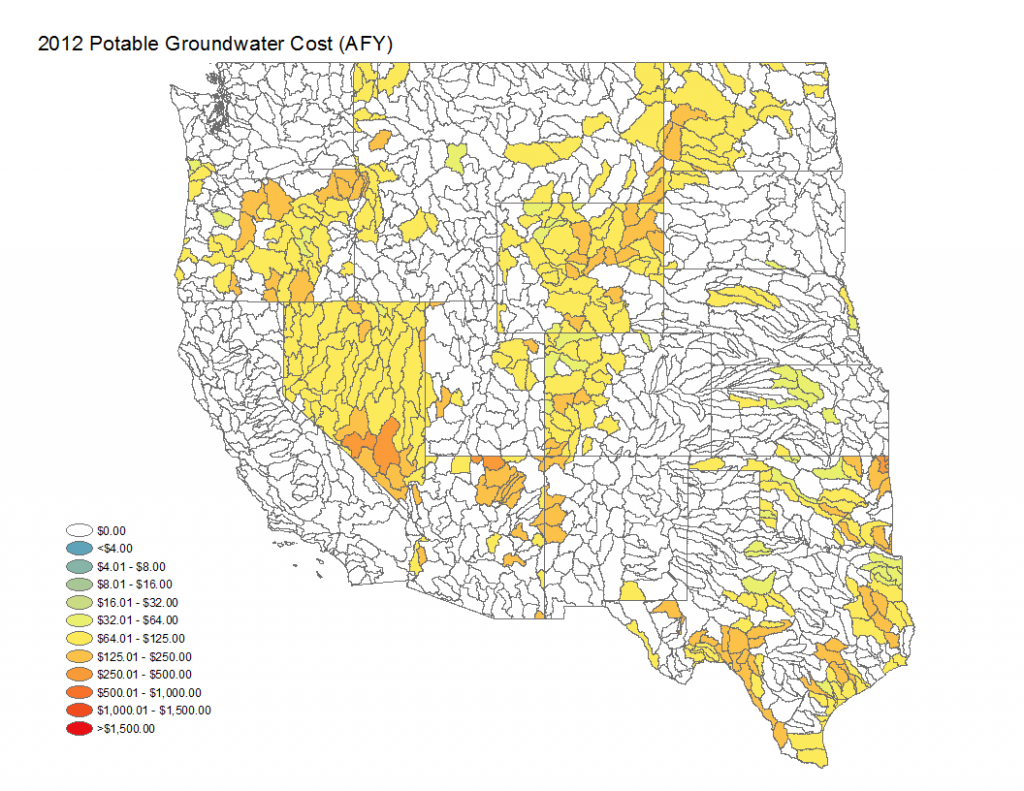Unappropriated Groundwater Metric
States exercise full authority over the allocation of groundwater resources. Determining the availability of groundwater for future development is complicated by numerous factors including the manner with which groundwater is managed (e.g., strict prior appropriations, right of capture); the physical hydrology of the basin; degree of conjunctive management between surface and groundwater resources; allowable depletions, and a variety of other issues. Except in very limited cases, the states have not broadly estimated and published data on the availability of unappropriated groundwater.
Given the aforementioned complexity and relative lack of supporting data, a simple water balance approach is adopted to identify potable groundwater that is potentially available for development. That is, unappropriated groundwater is set equal to the difference between annual average recharge and annual groundwater pumping. Recharge rates are taken from (NEED REFERENCE), which are derived from stream baseflow statistics, while pumping rates are taken from state data where available or from U.S. Geological Survey (Kenny et al. 2009) otherwise.
To account for unique groundwater management and/or aquifer characteristics, further restrictions on unappropriated groundwater availability are introduced. Specifically, availability is set to zero in watersheds located within state defined groundwater protection zones (data acquired directly from each state). Groundwater availability is likewise set to zero in watersheds realizing significant groundwater depletions (historical groundwater declines exceeding 40 ft. as given by Reilly and others [fusion_builder_container hundred_percent=”yes” overflow=”visible”][fusion_builder_row][fusion_builder_column type=”1_1″ background_position=”left top” background_color=”” border_size=”” border_color=”” border_style=”solid” spacing=”yes” background_image=”” background_repeat=”no-repeat” padding=”” margin_top=”0px” margin_bottom=”0px” class=”” id=”” animation_type=”” animation_speed=”0.3″ animation_direction=”left” hide_on_mobile=”no” center_content=”no” min_height=”none”][2008]). Finally, groundwater availability is set equal to zero in any watershed that 10% or less of its land area is underlain by a principle aquifer (Reilly et al. 2008).

Estimated costs consider both capital and O&M costs to lift water for use. Capital costs for drilling are estimated along with electricity to lift water following the approach outlined in Watson and others (2003). Depth to groundwater is taken from U.S. Geological Survey well log data (USGS 2011) and averaged at the 8-digit HUC level.
Kenny, R.F., N.L. Barber, S.S. Hutson, K.S. Linsey, J.K. Lovelace and M.A. Maupin, 2009. Estimated use of water in the United States in 2005, U.S. Geological Survey Circular 1344, 52p.
Reilly, T.E., K.F. Dennehey, W.M. Alley, and W.L. Cunningham, 2008. Ground-water availability in the United States in 2008, U.S. Geological Survey Circular 1323.
To view the sources and processes used to calculate estimates for all metrics, select a state below:
ADWR Basin Water Demand and Supply Data (1991-2009)
[/fusion_builder_column][/fusion_builder_row][/fusion_builder_container]
